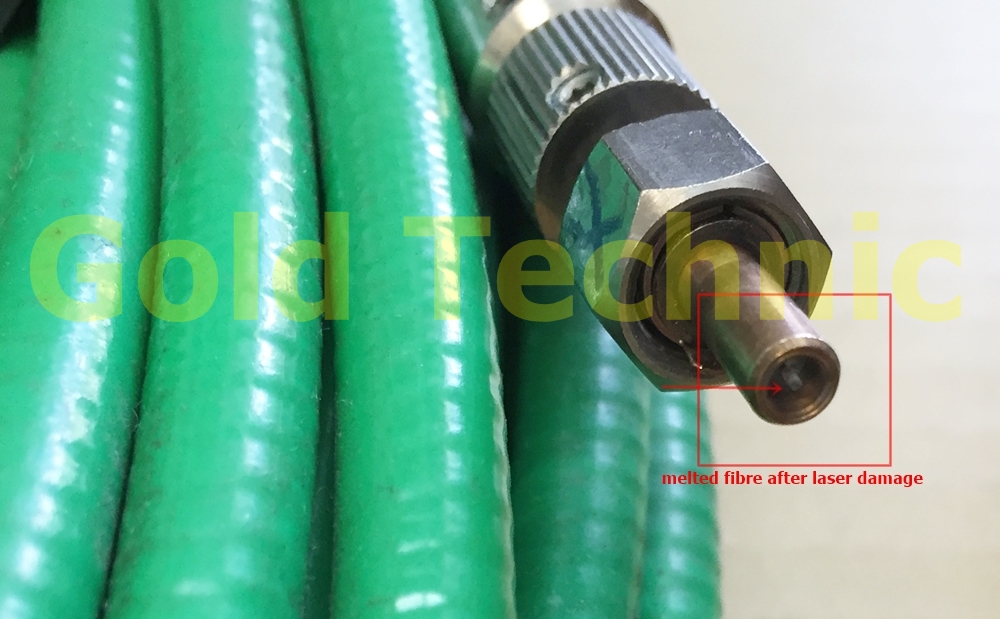
Amada Miyachi Unitek Laser Fiber repair
Laser fiber repair for AMADA UNITCH MIYACHI laser fiber welding machine. We can make repair for laser fiber fiber welding machines for burnt out fibers. Fibers will be terminated, reowrked and checked under the microscope before delivery to customer. We will also test the fiber by connecting to our in house laser welder to check for performance and any deformities during repair.
A “dirty”Amada Miyachi Unitek Laser fiber optic cable is the main cause of poor fiber performance. The smallest of particles on the surface of the fiber end can cause signal degradation. The bigger the particle, the larger the performance drops. Most times, when the particle sticks to the fiber end, it will cause the fiber to burn out and eventually the connector fails. Therefore, it is always recommended that the fiber is checked periodically for splashback from the welded piece or dirt that has accumulated on the surface after prolong usage.
After checking, if dirt/ welding residue is found on the surface, you should stop using the fiber and send in for laser fiber repair. If the fiber connector explodes in laser focusing head, the debris may damage the focusing head. This will increase the complexity of the repair and repair cost. It should be clear that a fiber optic cable is prone to damage, despite its outer protection. Therefore, a set of fiber handling rules exists to ensure that a cable is handled in such a way, that it maintains its optimum performance. Proper care and cleaning of fiber and connectors will improve the long-term performance and quality of services delivered by the fibers in a network and minimizes the potential for injury.
Repair for part numbers:
SI – Stepped Index Optical Fiber
4-62167-01 4-62168-01 4-60106-01 4-60170-01 4-60255-01 4-60256-01 4-60099-01 4-60085-01 4-60001-01 4-60086-01 4-60093-01 4-60115-01 4-60118-01 4-60119-01
GI – Graded Index Optical Fiber
4-62169-01 4-62170-01 4-60100-01 4-60122-01 4-60259-01 4-60260 -01 4-60087-01 4-60088-01 4-60002-01 4-60089-01 4-60128-01 4-60131-01 4-60133-01 4-60134-01






 D80 connector repair
D80 connector repair


 Alexandrite Crystal rods
Alexandrite Crystal rods

